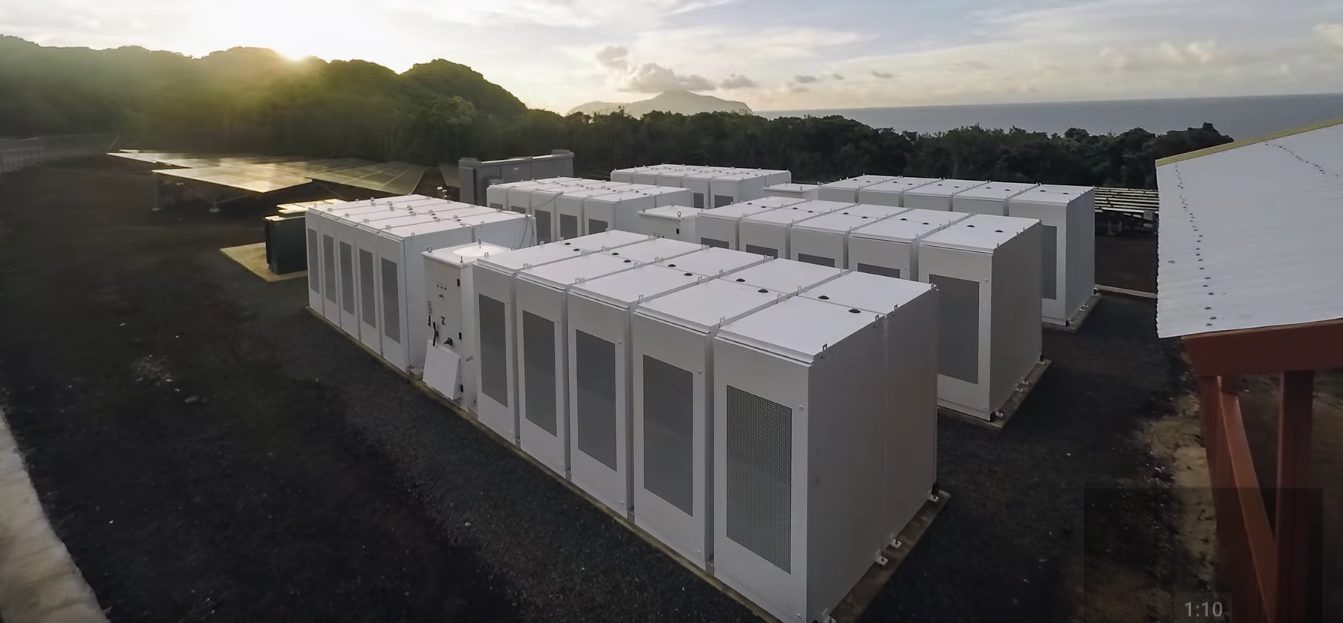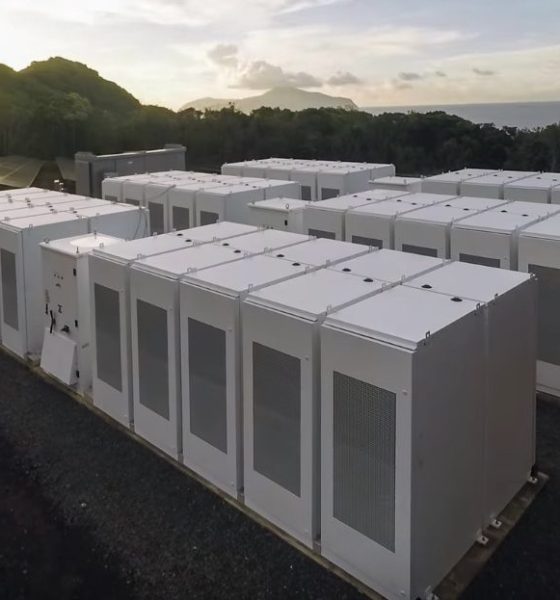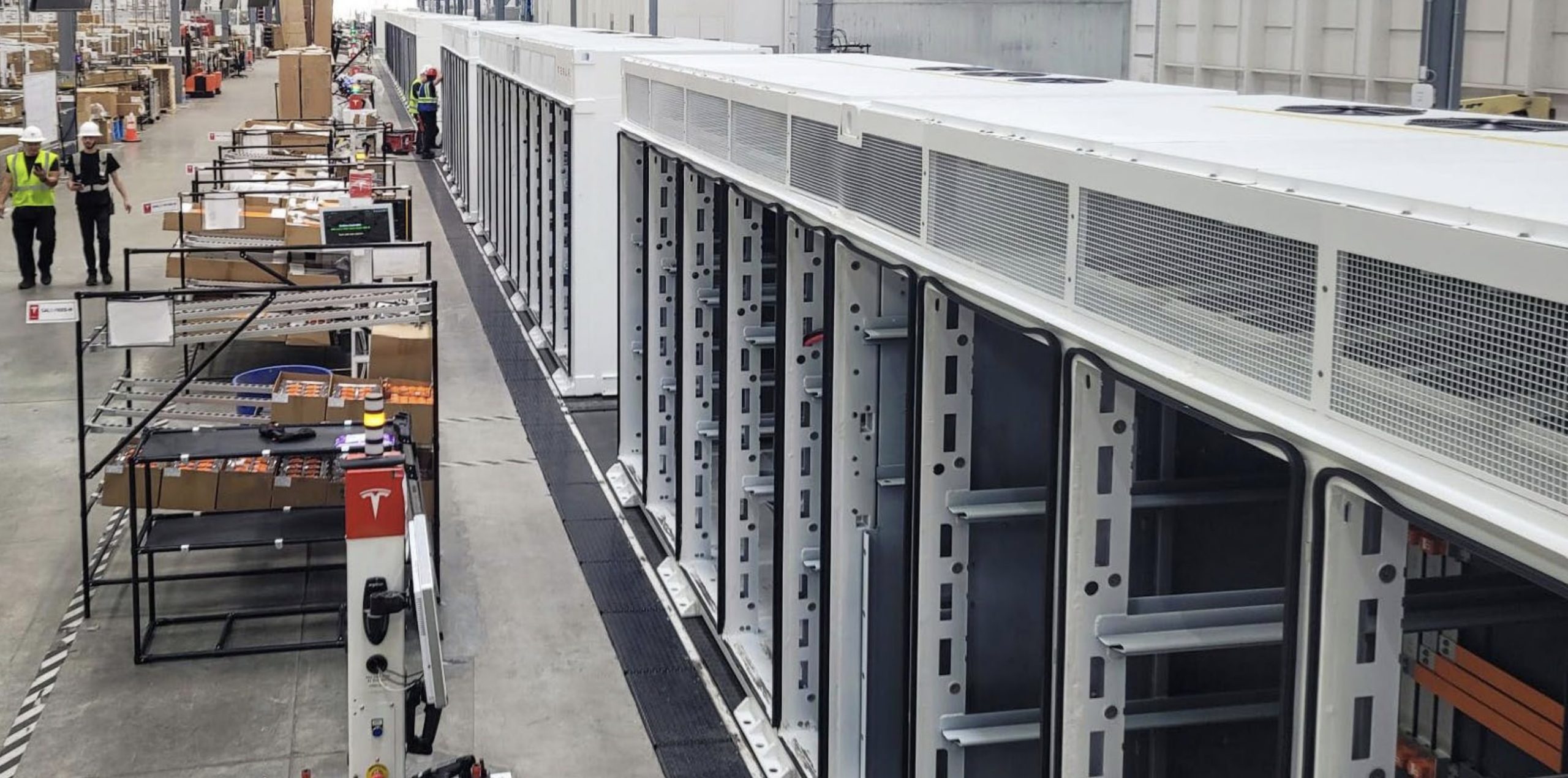

Energy
Could Tesla really rebuild Puerto Rico’s grid with batteries and solar?
Puerto Rico remains largely without electricity after hurricane Maria ripped through the island and destroyed much of its electricity grid. With rebuilding efforts underway from both non-profits and governmental aid, the U.S. territory has been able to reactivate just over 12% of the electricity grid and expects 25% of the grid to be online in the next month. Reconstruction of transmission lines and electrical infrastructure is expected to cost upwards of $5 billion, according to Ricardo Ramos, chief executive of Puerto Rico’s Electric Power Authority. With a public utility service that’s strapped in massive debt and linked to a bankruptcy filing in July, major funding for the crucial project to rebuild remains largely unknown.
While the U.S. government has failed to help restore power on the island, Tesla CEO Elon Musk is up for the challenge. In response to a question that asked if the billionaire entrepreneur would be able to restore power to Puerto Rico using independent solar and battery systems, Musk said, “The Tesla team has done this for many smaller islands around the world, but there is no scalability limit, so it can be done for Puerto Rico too. Such a decision would be in the hands of the PR govt, PUC, any commercial stakeholders and, most importantly, the people of PR.”
This caught the eye of Puerto Rico Governor, Ricardo Rossello, who suggested that the island could become Tesla Energy’s flagship project.
With 3.4 million residents on the island that use roughly 19 billion kWh of energy per year (19 million MWh), or an average of 5,310 kWh (5.2 MWh) per capita, building a Tesla solar and battery solution to meet some of the island’s needs will easily exceed the complexity and cost of Tesla’s existing massive battery project in Australia.
The Tesla Solution
According to the U.S. Energy Information Administration, Puerto Rico consumes 19 billion kWh of electricity per year with 96.4% of it being produced by fossil fuel generators. The other 3.6% is from renewable energy sources.
For the sake of coming up with some hypotheticals, let’s assume that Puerto Rico transitions at least 40% of its power generation to solar energy. To meet that goal, Tesla would need to install a 4,164 MW solar system (factoring in available sun hours), or roughly 5.2% of total global solar deployments in 2017, which is about 320 times larger than the solar plant that Tesla built in Kauai.
While it’s difficult to calculate the exact cost of a project of this caliber, we can still make some general estimates that are based on comparable projects and standard rates. In Q3 2016 SolarCity reported that its installation costs, excluding marketing and general administrative costs, were approximately $2 per watt-hour. Based on this assumption, a solar system for Puerto Rico could cost upwards of $8.32 billion.
Tesla would also be installing batteries to help balance the solar power generation and stabilize the grid. A Tesla battery storage solution in Puerto Rico of this size would far exceed the company’s existing “world’s largest lithium-ion battery” project in South Australia. Tesla would likely need a 5,000 MWh (5,000,000 kWh) battery system to support the installed solar.
Musk had previously said that projects over 100 MWh can expect a price of $250 per kWh. For a project of this size, Puerto Rico would be buying $1.25B worth of batteries from Tesla.
To put the size of the project in perspective, it’s worth noting that Tesla’s solar division (formally SolarCity) installed nearly 900 MWh of solar in 2016 and nearly 2,400 MWh over its history. The company is also expanding both solar and battery production at Gigafactory 1 and 2, both of which will help reduce costs over time as economies of scale are realized.
The real cost…
While projects as large as a proposed Tesla solution in Puerto Rico may seem incredibly expensive at first, it’s important to look at them with the right lens. Right now, households in the region pay $.198 per kWh, over 50% higher than the US average.
The total cost of solar and batteries would be $9.58B and would supply 40% of the island’s energy for decades. With Puerto Rico’s poor credit rating and high debt, financing this project won’t come easy, nor cheap. Factoring in a presumed 7% interest rate and the total project cost would exceed $21B over 20 years. In exchange, households would see a price drop in cost per kilowatt-hour to around $.112, as Puerto Rico transitions to a cleaner energy source with a more stable grid.
This project would clearly require a substantial investment in money and labor, something Musk doubters would find too large of scale for the company to tackle. But then again, when compared to building a network of massive rockets that would transport people across the world and eventually to Mars, a large-scale battery and solar system doesn’t seem all that difficult.

Cybertruck
Tesla updates Cybertruck owners about key Powershare feature

Tesla is updating Cybertruck owners on its timeline of a massive feature that has yet to ship: Powershare with Powerwall.
Powershare is a bidirectional charging feature exclusive to Cybertruck, which allows the vehicle’s battery to act as a portable power source for homes, appliances, tools, other EVs, and more. It was announced in late 2023 as part of Tesla’s push into vehicle-to-everything energy sharing, and acting as a giant portable charger is the main advantage, as it can provide backup power during outages.
Cybertruck’s Powershare system supports both vehicle-to-load (V2L) and vehicle-to-home (V2H), making it flexible and well-rounded for a variety of applications.
However, even though the feature was promised with Cybertruck, it has yet to be shipped to vehicles. Tesla communicated with owners through email recently regarding Powershare with Powerwall, which essentially has the pickup act as an extended battery.
Powerwall discharge would be prioritized before tapping into the truck’s larger pack.
However, Tesla is still working on getting the feature out to owners, an email said:
“We’re writing to let you know that the Powershare with Powerwall feature is still in development and is now scheduled for release in mid-2026.
This new release date gives us additional time to design and test this feature, ensuring its ability to communicate and optimize energy sharing between your vehicle and many configurations and generations of Powerwall. We are also using this time to develop additional Powershare features that will help us continue to accelerate the world’s transition to sustainable energy.”
Owners have expressed some real disappointment in Tesla’s continuous delays in releasing the feature, as it was expected to be released by late 2024, but now has been pushed back several times to mid-2026, according to the email.
Foundation Series Cybertruck buyers paid extra, expecting the feature to be rolled out with their vehicle upon pickup.
Cybertruck’s Lead Engineer, Wes Morrill, even commented on the holdup:
As a Cybertruck owner who also has Powerwall, I empathize with the disappointed comments.
To their credit, the team has delivered powershare functionality to Cybertruck customers who otherwise have no backup with development of the powershare gateway. As well as those with solar…
— Wes (@wmorrill3) December 12, 2025
He said that “it turned out to be much harder than anticipated to make powershare work seamlessly with existing Powerwalls through existing wall connectors. Two grid-forming devices need to negotiate who will form and who will follow, depending on the state of charge of each, and they need to do this without a network and through multiple generations of hardware, and test and validate this process through rigorous certifications to ensure grid safety.”
It’s nice to see the transparency, but it is justified for some Cybertruck owners to feel like they’ve been bait-and-switched.
Energy
Tesla starts hiring efforts for Texas Megafactory
Tesla’s Brookshire site is expected to produce 10,000 Megapacks annually, equal to 40 gigawatt hours of energy storage.

Tesla has officially begun hiring for its new $200 million Megafactory in Brookshire, Texas, a manufacturing hub expected to employ 1,500 people by 2028. The facility, which will build Tesla’s grid-scale Megapack batteries, is part of the company’s growing energy storage footprint.
Tesla’s hiring efforts for the Texas Megafactory are hinted at by the job openings currently active on the company’s Careers website.
Tesla’s Texas Megafactory
Tesla’s Brookshire site is expected to produce 10,000 Megapacks annually, equal to 40 gigawatt hours of energy storage, similar to the Lathrop Megafactory in California. Tesla’s Careers website currently lists over 30 job openings for the site, from engineers, welders, and project managers. Each of the openings is listed for Brookshire, Texas.
The company has leased two buildings in Empire West Business Park, with over $194 million in combined property and equipment investment. Tesla’s agreement with Waller County includes a 60% property tax abatement, contingent on meeting employment benchmarks: 375 jobs by 2026, 750 by 2027, and 1,500 by 2028, as noted in a report from the Houston Business Journal. Tesla is required to employ at least 1,500 workers in the facility through the rest of the 10-year abatement period.
Tesla’s clean energy boom
City officials have stated that Tesla’s arrival marks a turning point for the Texas city, as it highlights a shift from logistics to advanced clean energy manufacturing. Ramiro Bautista from Brookshire’s economic development office, highlighted this in a comment to the Journal.
“(Tesla) has great-paying jobs. Not just that, but the advanced manufacturing (and) clean energy is coming to the area,” he said. “So it’s not just your normal logistics manufacturing. This is advanced manufacturing coming to this area, and this brings a different type of job and investment into the local economy.”
Energy
Tesla and Samsung SDI in talks over new US battery storage deal: report
The update was related by industry sources and initially reported by South Korean news outlets.

Recent reports have suggested that Tesla and Samsung SDI are in talks over a potential partnership to supply batteries for large-scale energy storage systems (ESS).
The update was related by industry sources and initially reported by South Korean news outlets.
ESS batteries to be built at Samsung’s Indiana plant
As noted in a report from Korea JoongAng Daily, the demand for energy storage systems has been growing rapidly in North America, thanks in no small part to the surge in AI investments across numerous companies. With this in mind, Tesla has reportedly approached Samsung SDI about a potential battery supply deal.
The deal is reportedly worth over 3 trillion Korean won (approximately $2.11 billion) and will span three years, according to The Korea Global Economic Daily. A battery supply deal with Samsung SDI could make sense for Tesla as the company already has a grid-scale battery, the Megapack, which is perfect for industrial use. Samsung SDI could simply supply cells for the EV maker.
Production of the batteries would reportedly take place at Samsung SDI’s joint venture factory with Stellantis in Indiana, which is currently under construction. Samsung SDI recently announced plans to use part of that plant’s EV lines to produce cells for ESS, with a targeted capacity of 30 GWh by the end of next year.
Tesla and Samsung’s partnership
At present, only a handful of manufacturers, including Korea’s LG Energy Solution, Samsung SDI, SK On, and Japan’s Panasonic, are capable of producing energy storage-scale batteries domestically in the United States. A Samsung SDI official issued a comment about the matter, stating, “Nothing has been finalized regarding cooperation with Tesla.”
The possible energy storage system deal adds another layer to Tesla’s growing collaboration with Samsung, which is already in line as a partner in the upcoming production of Tesla’s AI5 and AI6 chips. Early sample manufacturing of the AI6 is expected to begin in South Korea, with mass production slated for Samsung’s Texas-based Taylor foundry when it starts operations.
The AI6 chip will power Tesla’s next wave of high-volume projects, including the Optimus humanoid robot and the autonomous Cybercab service. Musk has called the partnership with Samsung a “real collaboration,” adding that he personally plans to “walk the line” at the Taylor facility to speed up progress.











